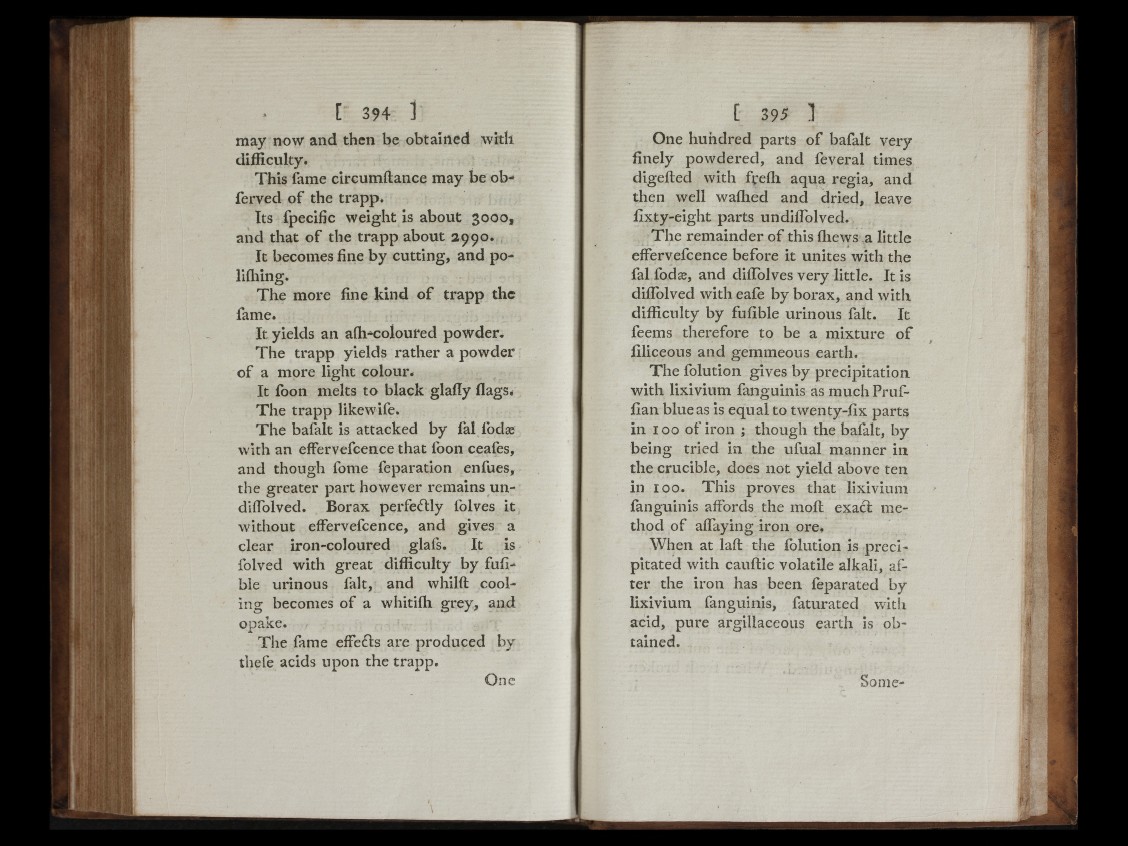
U
may now and then be obtained with
difficulty.
This fame circurnftance may be obferved
o f the trapp.
Its fpecific weight is about 3000,
and that o f the trapp about 2990.
It becomes fine by cutting, and po-
lifliing.
The more fine kind o f trapp the
fame.
It yields an aih-coloured powder.
The trapp yields rather a powder
o f a more light colour.
It foon melts to black glafty flags.
The trapp likewife.
The bafalt is attacked by fal fodæ
w ith an effervefcence that ibon ceafes,
and though fome reparation enfues,
the greater part however remains un-
diffolved. Borax perfeélly fol ves it
without effervefcence, and gives a
clear iron-coloured glafs. It is
folved with great difficulty by fufible
urinous fait, and whilft cooling
becomes o f a whitifli grey, and
opake.
The fame effefts are produced by
thefe acids upon the trapp.
One
One hundred parts o f bafalt very
finely powdered, and feveral times
digefled with ffeffi aqua regia, and
then well waftied and dried, leave
fixty-eight parts undillblved.
The remainder o f this fliews a little
effervefcence before it unites with the
fal fodæ, and dilTblves very little. It is
diffolved with eafe by borax, and with
difficulty by fufible urinous fait. It
feems therefore to be a mixture o f
filiceous and gemmeous earth.
The folution gives by precipitation
with lixivium fanguinis as much Pruf-
fian blue as is equal to twenty-fix parts
in 100 of iron ; though the bafalt, by
being tried in the ufual manner in
the crucible, does not yield above ten
in 100. This proves that lixivium
fanguinis affords the moft exact method
of aflaying iron ore.
When at laft the folution is precipitated
with cauftic volatile alkali, after
the iron has been feparated by
lixivium fanguinis, faturated with
acid, pure argillaceous earth is obtained.
Some